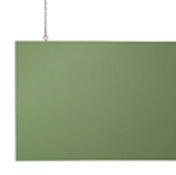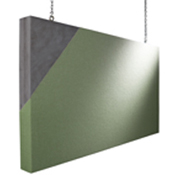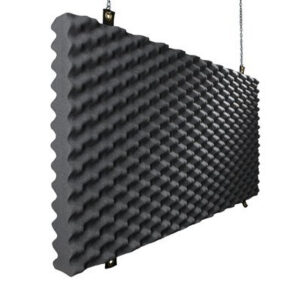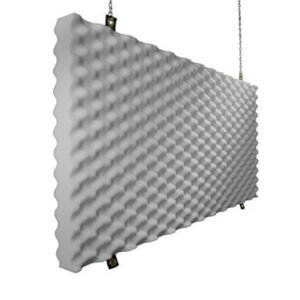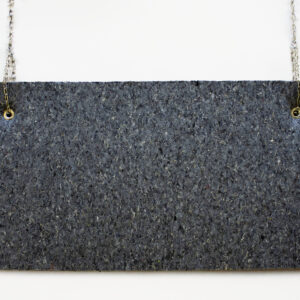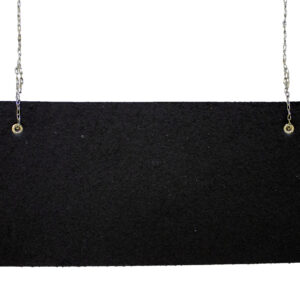Where to Use Ceiling Baffles
Our acoustic hanging baffles are ideal for large, open spaces. You can use them in various environments, including:
- Theaters: Acoustic ceiling baffles minimize echoes and reverberation in theaters and auditoriums, ensuring the audience hears every word and note clearly.
- Gymnasiums: High ceilings and hard surfaces in gyms can amplify noise. Hanging baffles absorb sound energy, lowering overall noise levels and making the space safer and more enjoyable.
- Offices: Installing hanging baffles in offices helps reduce distractions, improve speech intelligibility and create a more productive work environment.
- Restaurants: Busy dining areas can become uncomfortably loud, impacting the customer experience. Hanging sound baffles help manage background noise, allowing for easier conversation and a more pleasant dining ambience.
- Industrial areas: Hanging baffles can help absorb and control sound from loud machinery and equipment in industrial spaces.
- Broadcasting audio: For professional audio environments, ceiling baffles help achieve the controlled acoustics needed for high-quality sound recording and broadcasting.
Benefits of Hanging Baffles
Here are some of the benefits of using ceiling baffles in your space:
- Improved speech intelligibility: Sound baffles help reduce background noise and echo and enhance speech clarity, making it easier for people to understand each other in busy environments like offices, classrooms and restaurants.
- Safer decibel (dB) levels: Acoustic ceiling baffles help maintain safer decibel (dB) levels in large or noisy spaces by absorbing excess sound energy. Reducing harmful noise can create a safer, more comfortable environment.
- Better call quality: Hanging baffles minimize sound reflections and reverberation in call centers and open-plan offices, resulting in clearer phone and video calls.
Different Types of Sound Baffles
When selecting hanging sound baffles for your space, choosing the right material and design for your specific needs is essential. Here are the different ceiling baffles types and their best uses:
- Fabric-wrapped: Fabric-wrapped baffles can contain different cores like fiberglass or glass mineral wool. These baffles combine effective sound absorption with an appealing aesthetic, making them a popular choice for lobbies, offices and schools.
- Foam: A versatile and Class A fire-rated material, foam is excellent at absorbing high-frequency noise and controlling reverberation. Their lightweight design makes them ideal for large, open areas like gyms, auditoriums and restaurants.
- Natural blend: These hanging baffles are made from recycled natural fibers like cotton and wool. They offer effective sound absorption in various spaces, from classrooms to manufacturing facilities.



